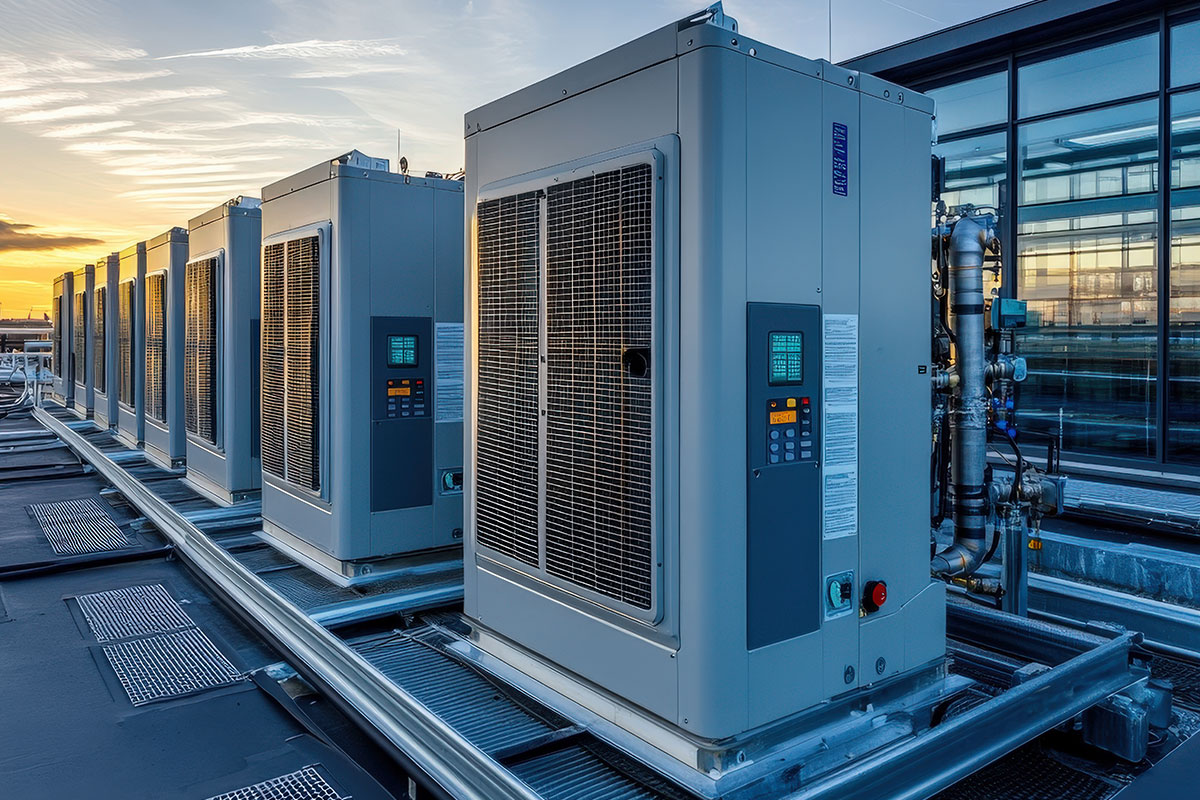High-Efficiency Cooling Systems and Energy Savings
High-efficiency cooling systems reduce energy consumption, lowering operating costs while minimizing environmental impact. Here are the energy-saving methods provided by these systems:
-
Inverter Technology
Inverter technology saves energy by adjusting the compressor speed according to demand. Instead of running at full capacity continuously, the system modulates its power output, significantly reducing energy consumption. -
Smart Control Systems
Smart control systems continuously monitor air temperature, humidity levels, and user requirements to determine the most efficient operating conditions. These systems prevent unnecessary energy use and improve overall efficiency. -
Proper Sizing
Correct sizing of cooling systems is critical for efficiency. Oversized systems consume excessive energy unnecessarily, while undersized systems fail to provide adequate cooling. Proper sizing ensures optimal energy efficiency. -
High-Efficiency Components
Using high-efficiency compressors, evaporators, and condensers is another way to reduce energy consumption. These components deliver higher performance with less energy. -
Heat Recovery
Cooling systems generate heat during operation. Heat recovery systems can reuse this heat, saving energy and reducing energy costs. -
Regular Maintenance
Regular maintenance and cleaning improve system efficiency. Dirty filters, fans, and coils cause the system to work harder and consume more energy. Proper upkeep helps achieve energy savings.
Conclusion
High-efficiency cooling systems help businesses save energy and reduce costs. Effective use of these systems contributes to environmental sustainability while increasing long-term profitability.


